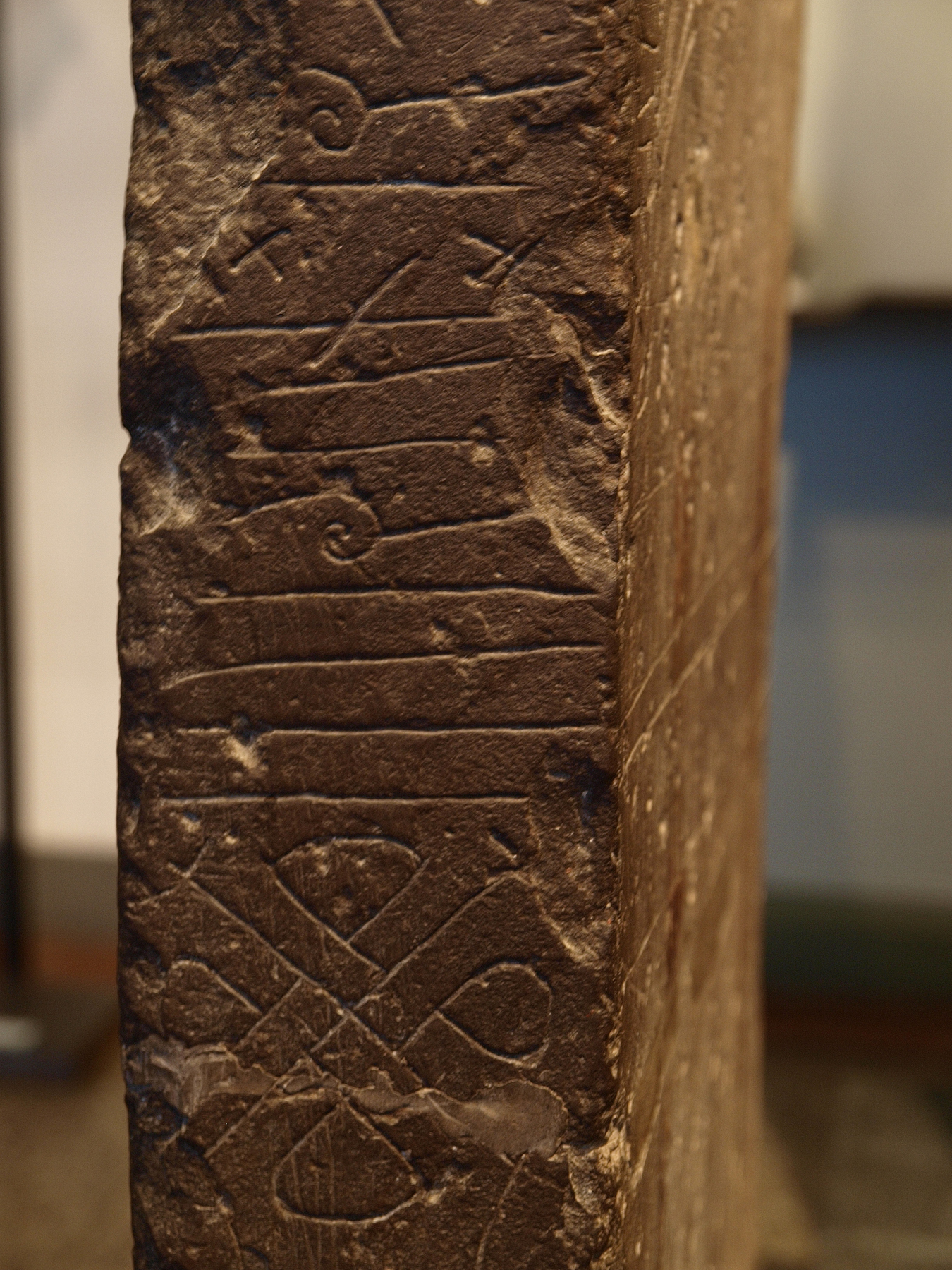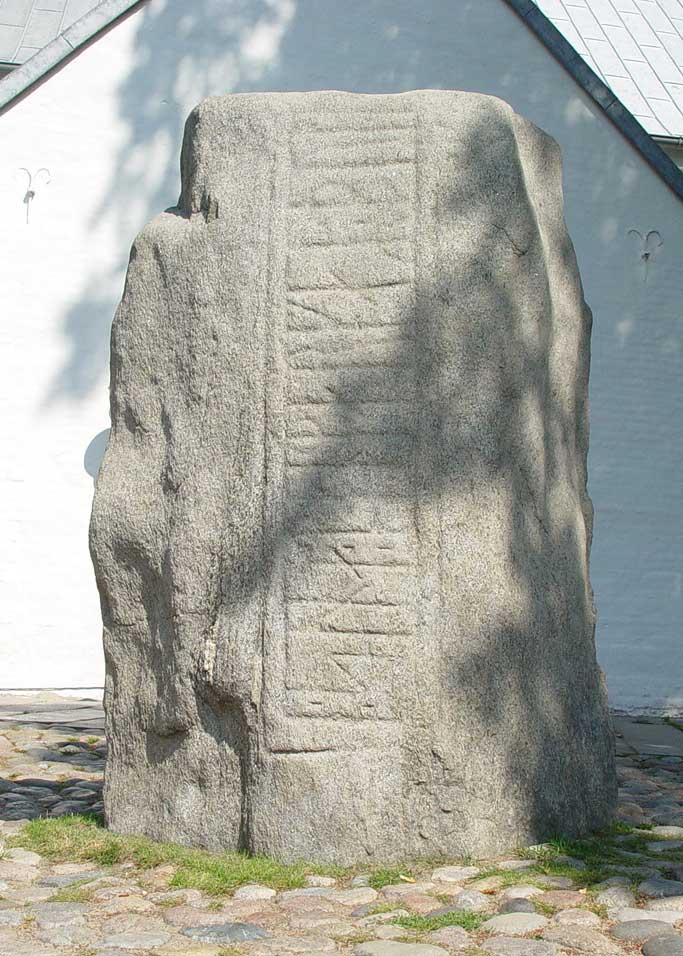|
Sigurd Hjort
Sigurd Hart or Sigurd Hjort was a legendary king of Ringerike (modern central south Norway), during the late 9th or early 10th centuries. he is mentioned in ''Ragnarssona þáttr'' ("The Tale of Ragnar's Sons") and in '' Halvdan Svartes saga'' ("Halfdan the Black's Saga"). ''Ragnarssona þáttr'' states that Sigurd Hart was the son of Helgi the Sharp (the great-great-grandson of king Ring of Ringerike) of the Dagling dynasty and Helgi's wife Aslaug. Helgi was reportedly the son-in-law of Sigurd Snake-in-the-Eye (one of Ragnar Lodbrok's sons) and Blaeja, the daughter of king Aelle II of Northumbria. Biography Traditional sources state that Sigurd Hart was only 12 years old when he slew a berserker named Hildibrand in a duel, and 11 other men. He married a woman named Ingeborg (supposedly the daughter of the historical Jutish chieftain Harald Klak, c. 785 – c. 852, although Harald was probably too old for that to be true). Sigurd Hart and Ingeborg had children named Guttorm ... [...More Info...] [...Related Items...] OR: [Wikipedia] [Google] [Baidu] |
Ringerike (traditional District)
Ringerike is a traditional district in Norway, commonly consisting of the municipalities Hole and Ringerike in Buskerud county. In older times, Ringerike had a larger range which went westward to the municipalities Krødsherad, Modum, and Sigdal, also in Buskerud. Ringerike has a rich history that is connected with one of the most notable kings in the history of Norway, the father of King Harald Fairhair Halfdan the Black, who subdued Gandalf, King of Alfheim and half of Vingulmork, and the Dagling clan. Gandalf was possibly the last king of Ringerike, whose name is given to the eponymous King Hring, son of Raum the Old (cf. Romerike), son of Nór (the eponymous ancestor of Norwegians), according to the Sagas of the ancient Northernlands, better known as the Orkneyinga saga. It is possible that this, as the name suggests, was the legendary heartland of the House of Sigurd Hring and Ivar the Wide-Fathoming. There are also many archaeological remains in the area, dating to the med ... [...More Info...] [...Related Items...] OR: [Wikipedia] [Google] [Baidu] |
Hadeland
Hadeland () is a traditional district in the southeastern part of Norway. It is centered on the southern part of the large lake Randsfjorden in Innlandet and Viken counties. The district consists of the municipalities Gran in Innlandet county and Jevnaker and Lunner in Viken county. Hadeland occupies the area north of the hills of Nordmarka close to the Norwegian capital Oslo. The soil around the Randsfjorden is amongst the most fertile in Norway. Hadeland accounts for just 5% of the country's area, but it represents 13% of its agricultural land. Farmers harvest grains and potatoes. Pigs, dairy cattle, and horses are also bred at farms there. Jevnaker is located to the southern and western side of the Randsfjorden. Gran's rolling countryside is home to about two-thirds of the nearly 30,000 people living in Hadeland. The village of Jaren serves as the area's main center of commerce. The municipality of Gran is divided by the Randsfjorden, and its western part is known as the ''Fj ... [...More Info...] [...Related Items...] OR: [Wikipedia] [Google] [Baidu] |
Cnut The Great
Cnut (; ang, Cnut cyning; non, Knútr inn ríki ; or , no, Knut den mektige, sv, Knut den Store. died 12 November 1035), also known as Cnut the Great and Canute, was King of England from 1016, King of Denmark from 1018, and King of Norway from 1028 until his death in 1035. The three kingdoms united under Cnut's rule are referred to together as the North Sea Empire. As a Danish prince, Cnut won the throne of England in 1016 in the wake of centuries of Viking activity in northwestern Europe. His later accession to the Danish throne in 1018 brought the crowns of England and Denmark together. Cnut sought to keep this power-base by uniting Danes and English under cultural bonds of wealth and custom. After a decade of conflict with opponents in Scandinavia, Cnut claimed the crown of Norway in Trondheim in 1028. The Swedish city Sigtuna was held by Cnut (he had coins struck there that called him king, but there is no narrative record of his occupation). In 1031, Malcolm II of S ... [...More Info...] [...Related Items...] OR: [Wikipedia] [Google] [Baidu] |
Świętosława
Świętosława was a Polish princess, the daughter of Mieszko I of Poland and sister of Bolesław I of Poland. According to German chroniclers, this princess, whose name is not given, was married first to Eric the Victorious of Sweden and then to Sweyn Forkbeard of Denmark, giving the former a son, Olof, and the latter two sons, Harald and Cnut. The name retrospectively given her, Świętosława, derives from that of a likely daughter, under the assumption that this girl may have borne the same name as her mother. The Icelandic sagas give her role as successive queen of these two monarchs to Sigrid the Haughty, daughter of Skagul Toste. This account is considered less reliable than the contemporary chroniclers by a number of scholars, according to Birgitta Fritz in Svenskt biografiskt lexikon, and the historical authenticity of Sigrid is viewed skeptically. Snorre Sturlasson also mentions a Slavic princess he calls Gunhild of Wenden, daughter of king Burislav of the Wends, the ... [...More Info...] [...Related Items...] OR: [Wikipedia] [Google] [Baidu] |
Sweyn Forkbeard
Sweyn Forkbeard ( non, Sveinn Haraldsson tjúguskegg ; da, Svend Tveskæg; 17 April 963 – 3 February 1014) was King of Denmark from 986 to 1014, also at times King of the English and King of Norway. He was the father of King Harald II of Denmark, King Cnut the Great, and Queen Estrid Svendsdatter. In the mid-980s, Sweyn revolted against his father, Harald Bluetooth, and seized the throne. Harald was driven into exile and died shortly afterwards in November 986 or 987. In 1000, with the allegiance of Eric, Earl of Lade, Sweyn ruled most of Norway. In 1013, shortly before his death, he became the first Danish king of the English after a long effort. Biography Historiographical sources on Sweyn's life include the ''Anglo-Saxon Chronicle'' (where his name is rendered as ''Swegen''), Adam of Bremen's 11th-century '' Deeds of the Bishops of Hamburg'', and Snorri Sturluson's 13th-century ''Heimskringla''. Conflicting accounts of Sweyn's later life also appear in the '' Encomi ... [...More Info...] [...Related Items...] OR: [Wikipedia] [Google] [Baidu] |
Gyrid Of Sweden
Gyrid Olafsdottir of Sweden, also called ''Gyritha''Arrild Huitfeld: "Danmarckis Rigis Krønicke - Den første Tomus eller Part", 1652, p. 51 (in Folio-edition) (p. 104 in the original edition from 1603) or perhaps ''Gunnhild'' (10th-century), according to legends was a Swedish princess and a Danish queen consort as the spouse of King of . Biography In the sagas Gyrid was the daughter of King[...More Info...] [...Related Items...] OR: [Wikipedia] [Google] [Baidu] |
Harald Bluetooth
Harald "Bluetooth" Gormsson ( non, Haraldr Blátǫnn Gormsson; da, Harald Blåtand Gormsen, died c. 985/86) was a king of Denmark and Norway. He was the son of King Gorm the Old and of Thyra Dannebod. Harald ruled as king of Denmark from c. 958 – c. 986. Harald introduced Christianity to Denmark and consolidated his rule over most of Jutland and Zealand. Harald's rule as king of Norway following the assassination of King Harald Greycloak of Norway was more tenuous, most likely lasting for no more than a few years in the 970s. Some sources say his son Sweyn Forkbeard forcibly deposed him from his Danish throne before his death. Name Harald's name is written as runic ''haraltr : kunukʀ'' (ᚼᛅᚱᛅᛚᛏᚱ ᛬ ᚴᚢᚾᚢᚴᛦ) in the Jelling stone inscription. In normalized Old Norse, this would correspond to ''Haraldr konungr'', i.e. "Harald king". The Latinized name as given in the medieval Danish chronicles is ''Haraldus Gormonis filius'' (Harald, Gorm's son). T ... [...More Info...] [...Related Items...] OR: [Wikipedia] [Google] [Baidu] |
Thyra
Thyra, also known as Thorvi or Thyre, was a Danish queen, spouse of King Gorm the Old of Denmark, the first historically recognized King of Denmark, who reigned from to his death .Kongerækken at The Danish Monarchy Historical facts and uncertainties She is believed to have led an army against the . Gorm and Thyra were the parents of King . While |
Gorm The Old
Gorm the Old ( da, Gorm den Gamle; non, Gormr gamli; la, Gormus Senex), also called Gorm the Languid ( da, Gorm Løge, Gorm den Dvaske), was ruler of Denmark, reigning from to his death or a few years later.Lund, N. (2020), p. 147''Pilemedia'' (in Swedish), 25 October 2020 |
Oslofjord
The Oslofjord (, ; en, Oslo Fjord) is an inlet in the south-east of Norway, stretching from an imaginary line between the and lighthouses and down to in the south to Oslo in the north. It is part of the Skagerrak strait, connecting the North Sea and the Kattegat sea area, which leads to the Baltic Sea. The Oslofjord is not a fjord in the geological sense — in Norwegian the term can refer to a wide range of waterways. The bay is divided into the inner () and outer () Oslofjord, separated by the long by wide Drøbak Sound. The innermost part is known as the Bunnefjorden. Name In the period 1624–1925 the name of the fjord was (or ), since Christiania was the name of the capital in this period. The old Norse name of the fjord was , giving names to the counties of Vestfold ('the district west of Fold') and Østfold ('the district east of Fold') — and also the district Follo. Geography Each of the islands in the innermost part of the fjord has its own identi ... [...More Info...] [...Related Items...] OR: [Wikipedia] [Google] [Baidu] |
Halland
Halland () is one of the traditional provinces of Sweden (''landskap''), on the western coast of Götaland, southern Sweden. It borders Västergötland, Småland, Scania and the sea of Kattegat. Until 1645 and the Second Treaty of Brömsebro, it was part of the Kingdom of Denmark. Its name means ''Land of Rocky Slabs'' (Swedish: ''hällar'') referring to the coastal cliffs of the region. Administration The provinces of Sweden serve no administrative function. Instead, that function is served by the Counties of Sweden. However, the province of Halland is almost coextensive with the administrative Halland County, though parts of the province belong to Västra Götaland County and Skåne County, while the county also includes parts of Småland and Västergötland. As of 31 December 2016 Halland had a population of 327,093. Of these, 310,536 lived in Halland County; 14,205 lived in Västra Götaland County; and 2,352 lived in Skåne County. Heraldry During the Danish era unt ... [...More Info...] [...Related Items...] OR: [Wikipedia] [Google] [Baidu] |
Scania
Scania, also known by its native name of Skåne (, ), is the southernmost of the historical provinces of Sweden, provinces (''landskap'') of Sweden. Located in the south tip of the geographical region of Götaland, the province is roughly conterminous with Skåne County, created in 1997. Like the other former provinces of Sweden, Scania still features in colloquial speech and in cultural references, and can therefore not be regarded as an archaic concept. Within Scania there are 33 municipalities of Sweden, municipalities that are autonomous within the Skåne Regional Council. Scania's largest urban areas of Sweden, city, Malmö, is the third-largest city in Sweden, as well as the fifth-largest in Scandinavia. To the north, Scania borders the former provinces of Halland and Småland, to the northeast Blekinge, to the east and south the Baltic Sea, and to the west Öresund. Since 2000, a road and railway bridge, the Öresund Bridge, bridges the Öresund, Sound and connects Scania ... [...More Info...] [...Related Items...] OR: [Wikipedia] [Google] [Baidu] |







